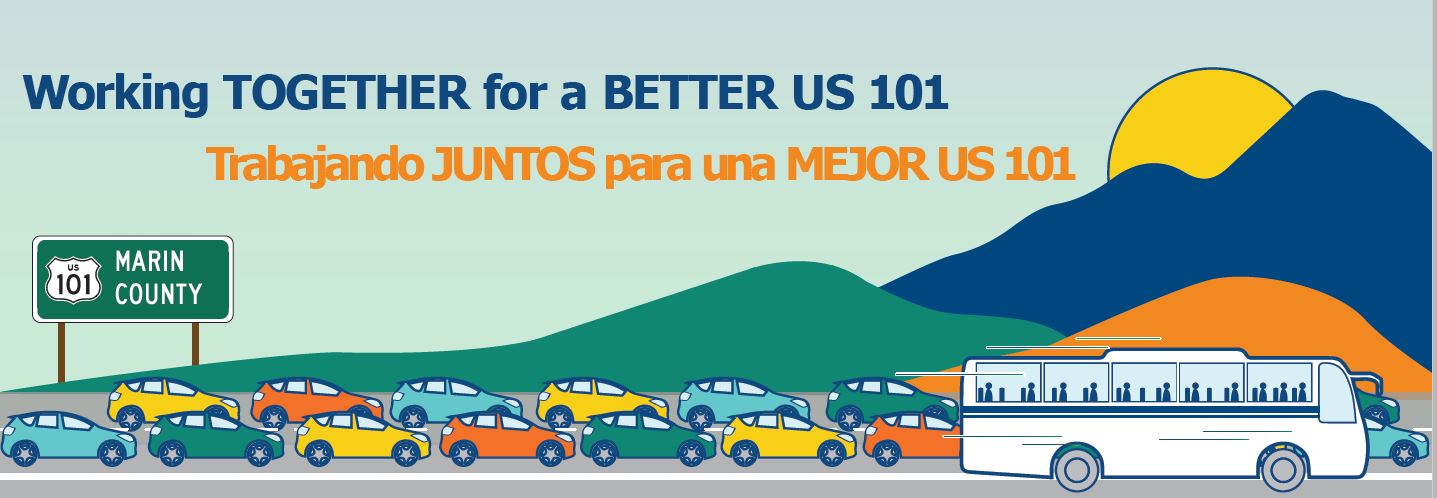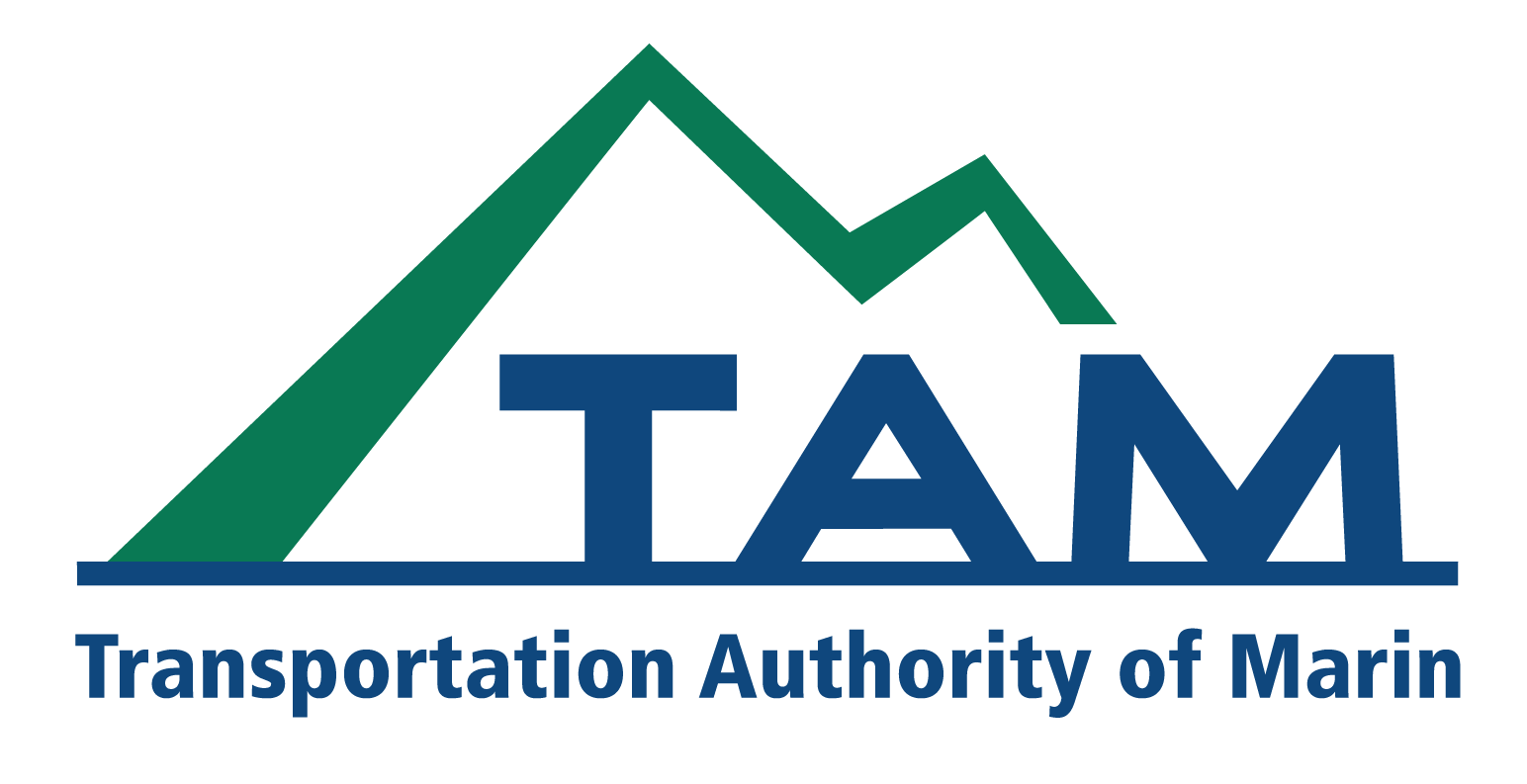US 101 Part-Time Transit Lanes Feasibility Study

US 101 Part-Time Transit Lane Feasibility Study
Check out the Video that summarized the Part-Time Transit Lane Study.
The US 101 Part-Time Transit Lane Feasibility Study will assess the feasibility of part-time transit lanes on the US 101 corridor in central and northern Marin County. Converting highway shoulder lanes to part-time transit lanes to bypass congestion improves transit reliability, making transit a more attractive travel choice for commuters. Prior to COVID-related service changes, there were over 350 daily bus trips and several thousand daily riders on this stretch of US 101.
The Transportation Authority of Marin (TAM) conducted a preliminary study to determine the suitability, benefits, costs, and other considerations to implement part-time transit lane operations along the US 101 corridor from Atherton Avenue/San Marin Drive in Novato to Mission Avenue in San Rafael. This span of highway is approximately 11 miles and features 12 interchanges and local connecting roads, most of which have bus stops.
About Part-Time Transit Lanes
With part-time transit lanes, buses are authorized to use the outside freeway shoulder to bypass congestion. Use of the part-time transit lane is often limited to peak periods of the day when there is recurring congestion. Buses would only use the part-time transit lane when travel speeds on the freeway drop below 35 miles per hour and the maximum speed for the buses would be 35 miles per hour. If the part-time transit lane is in use by CHP or closed due to construction or an incident, then buses would use the main freeway lanes. These measures ensure that part-time transit lanes can be implemented safely while also benefitting transit riders when congestion and ridership are the highest.
Part-Time Transit Lane Benefits
Although part-time transit lanes are a relatively new transit tool in California, other US cities have implemented this strategy with much success. When buses can access part-time transit lanes, it results in several benefits:
- Reducing transit travel times
- Improving transit reliability, making transit a more viable travel choice for commuters
- May reduce congestion and automobile delay by encouraging some drivers to shift to using transit
- Does not require any freeway widening as it utilizes the existing highway right of way
- Serving low-income communities traveling within, to and from Marin County
- Quicker implementation time period and lower cost than traditional freeway widening
Curious what part-time transit use looks like? Check out this example from the Chapel Hill Transit Agency
Additional Background
US 101 forms the backbone of Marin County’s transportation network. The north-south corridor is critical to both regional and local travel, providing connections to neighboring San Francisco, Sonoma County, and Contra Costa County. Two transit agencies serve the US 101 corridor in Marin County: Marin Transit offers local service internal to Marin County and Golden Gate Transit provides connections between and within Sonoma, Marin, and San Francisco Counties.
Currently, transit travel times in the US 101 corridor degrade substantially in the southbound morning commute, and transit service reliability suffers. Southbound morning congestion is forecasted to continue to increase in coming years. In addition, the reverse commute north towards Sonoma County is expected to grow with increasing traffic volumes.
Due to longstanding issues of congestion, there have been several initiatives (focused on roadway widenings and HOV lanes) to improve corridor conditions on US 101 over the past few decades. However, because of the corridor’s constrained right-of-way and the high costs to expand the roadway, regional agencies are examining alternate, faster strategies to improve travel through the corridor, including consideration of ramp metering and part-time transit lanes.
Public Outreach
As the US 101 Part-Time Transit Lane Feasibility Study progresses forward, updates will be provided here when there are opportunities for public involvement.
Share Your Ideas and Comments
Let us know your thoughts and ideas about the future Part-Time Transit Lane service. Please send comments to info@tam.ca.gov
Online Survey
In November 2020, a survey was conducted to gather input on the preliminary study.
Feasibility Study
September 2021 Final Part-Time Transit Lane Feasibility Study
Comments on the Draft Feasibility Study
Initial Outreach Materials
Project Timeline
The following is an estimated milestone timeline for the development of the US 101 Part-Time Transit Lane Feasibility Study:
- Existing Conditions Analysis: September 2020
- Public Outreach: October/November 2020 and May/June 2021
- Concept Plan: December 2020
- Pilot Operations Plan: January 2021
- Corridor Travel Behavior and User Benefits Report: February 2021
- Final Feasibility Study: September 2021
Funding
This project is funded by the Sustainable Communities (SB-1) Grant awarded to TAM by the California Department of Transportation (Caltrans).
